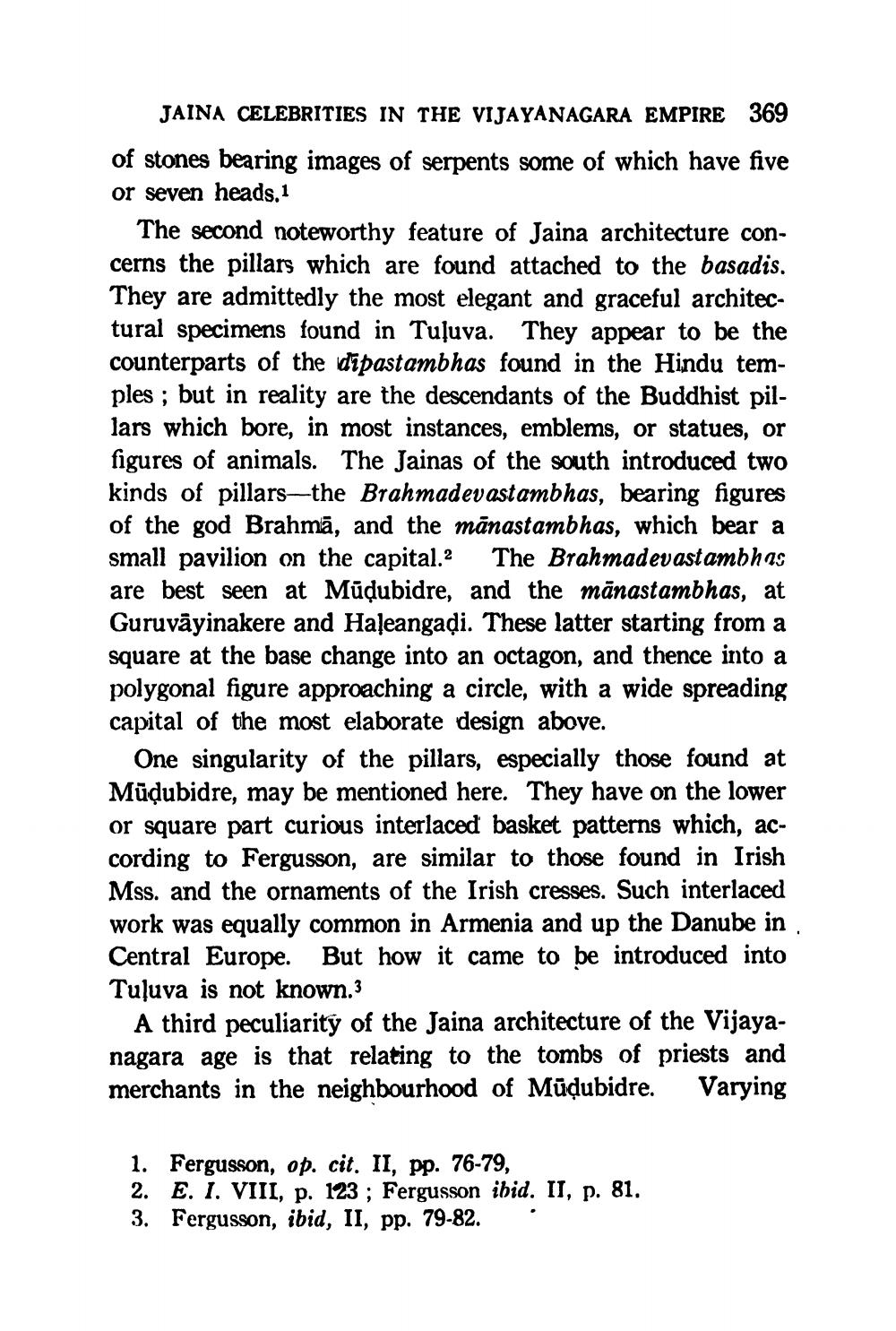________________
JAINA CELEBRITIES IN THE VIJAYANAGARA EMPIRE 369 of stones bearing images of serpents some of which have five or seven heads.1
The second noteworthy feature of Jaina architecture concerns the pillars which are found attached to the basadis. They are admittedly the most elegant and graceful architectural specimens found in Tuļuva. They appear to be the counterparts of the dipastambhas found in the Hindu temples ; but in reality are the descendants of the Buddhist pillars which bore, in most instances, emblems, or statues, or figures of animals. The Jainas of the south introduced two kinds of pillars—the Brahmadevastambhas, bearing figures of the god Brahmā, and the mānastambhas, which bear a small pavilion on the capital. The Brahmadevastambhas are best seen at Mūdubidre, and the mānastambhas, at Guruvāyinakere and Haļeangadi. These latter starting from a square at the base change into an octagon, and thence into a polygonal figure approaching a circle, with a wide spreading capital of the most elaborate design above.
One singularity of the pillars, especially those found at Mūdubidre, may be mentioned here. They have on the lower or square part curious interlaced basket patterns which, according to Fergusson, are similar to those found in Irish Mss. and the ornaments of the Irish cresses. Such interlaced work was equally common in Armenia and up the Danube in Central Europe. But how it came to be introduced into Tuļuva is not known.3
A third peculiarity of the Jaina architecture of the Vijayanagara age is that relating to the tombs of priests and merchants in the neighbourhood of Mūdubidre. Varying
1. Fergusson, op. cit. II, pp. 76-79, 2. E. I. VIII, p. 123 ; Fergusson ibid. II, p. 81. 3. Fergusson, ibid, II, pp. 79-82.




